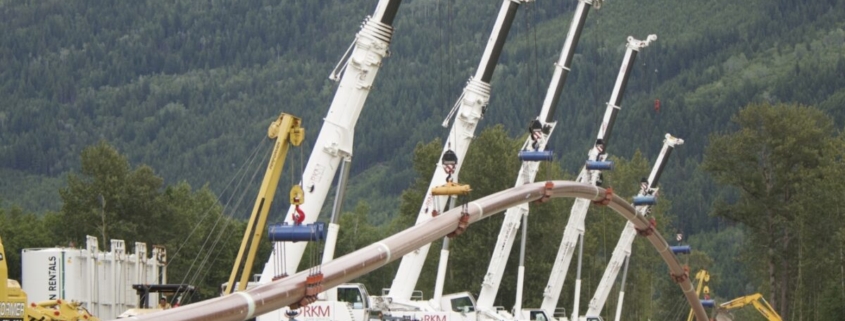Inflation and the Energy Transition
The global economy is gaining momentum, even before the masks have come off the pandemic.
Unemployment rates are falling faster than expected in key countries, most notably the United States. Global GDP is being revised upward according to the IMF’s latest World Economic Outlook report. The economy is forecast to grow by 6% this year. Put simply, this means that after contracting in 2020, the global economy will be larger in 2021 than in the pre-pandemic days of 2019. It seems we’re back on a fast-moving train (still diesel-powered), and it’s all happening before governments shell out a couple of trillion dollars on the clean energy transition.
Not surprisingly, economy talk in Zoom breakout rooms is of budding inflation and interest rate hikes. We haven’t experienced that duo in any meaningful way for at least 40 years.
The 1970s was a nasty decade overall — prices rose by over 10% a year, wage and price controls were brought in, and interest rates were hiked quarterly to combat the scourge that kept eroding our spending power. Can you imagine taking out a mortgage at 20%?
For now, those extremes aren’t likely. But it’s not too early to think about what even mildly inflating prices and upticks in interest rates could mean to energy, especially with the accelerated ambitions for decarbonization.
Here are six considerations:
1. Energy projects are big money, big debt.
Building electrical grids and power facilities and retooling industrial plants cost billions of dollars. Much of these long-life installations are financed with debt. For example, it’s common for renewable energy projects to be leveraged 80% or more. Rising interest rates burden the investment calculus, especially if operating margins are thin. Clean energy projects may lose momentum at higher rates of interest, but at what level is not yet known because we’ve mostly experienced low, flat rates over the past decade of nonstop growth.
2. Manufactured goods are less affected.
Things that come off assembly lines in large volumes, like batteries, solar panels and LED lights, are less likely to be affected by interest rate hikes. Larger scale manufacturing operations with constantly improving automation technologies can offset upward inflationary effects from other parts of the business. But inflation can’t always be tamed by technological wizardry.
3. Inflation comes down to earth, literally.
For builders and makers of things, the price of resource commodities is the big inflationary wild card over the next few years. Electrification needs a lot of copper. Retooling plants requires steel. Batteries and motors need metals and minerals, some rare. Bulldozers need diesel. Buildings need lumber. The prices of all these earth-drawn commodities are already on a tear due to tightening supplies. No wonder, the S&P GSCI is pushing toward a seven-year high.
And so, the Producer Price Index, which measures the average price American companies receive for their products, is nudging up for the first time since 2008. Watch this closely. Problems begin when the rate of inflation for raw materials overtakes the rate at which technology can bring down the cost of making things.
4. Oil and inflation have a longstanding partnership.
Crude oil remains the dominant input into the economy, whether combusted in engines or used as petrochemical feedstock for almost everything around us — from eyeglasses to pharmaceuticals to the tires on electric vehicles. When oil prices go up, so do producer and consumer prices.
It’s true that accelerated adoption of electric vehicles can bring oil prices down eventually, but for now there’s still a billion piston-powered vehicles hitting the road every day. Bulldozers use oil too. So, the transition to new energy infrastructure can’t happen without ongoing reliance on oil.
At over US$60, the price for a barrel (WTI) has already inflated 20% higher than the average for the preceding five years. Renewed consumption patterns, constrained investment and quota management by the OPEC+ cartel suggest current prices are likely to remain strong.
5. OPEC understands the perils of oil price inflation.
Rising oil prices flow through to consumers of oil like a carbon tax. Historically, the tipping point has been when a barrel sells above US$80. That means if oil inflates by another 20 bucks, consumers will seriously flock to alternative modes of transport. On the eve of new EV models hitting the market, OPEC knows not to let prices run away, lest it lose customers faster, so it’s likely to manage prices below that level, if it can.
In this regard, the relative price inflation between oil and battery minerals will be key to watch. Every resource company wants to make more money, but none should want to see its prices inflate faster than its competitors’. Over the next few years, the market battle between EVs and ICE vehicles may well be determined in the mines and oilfields of the world.
6. Consumer price inflation accelerates consumption.
Consumer prices have been fairly stable, inflating by around 2% and 3% per year for over two decades. Inflation erodes purchasing power and encourages people to spend more today before their dollars are worth less tomorrow. “Better buy now, before prices go up” is the dinner table convo. Housing markets are a good example of this behavior, which can cascade down to cars, big-screen TVs and those shoes you always wanted. Left unchecked, consumer inflation becomes a vicious, self-reinforcing feedback loop that forces interest rate hikes. And then we’re back to point number 1.
The last decade was remarkable. In many ways, renewable energy and electric vehicles became competitive and got their market momentum under ideal economic conditions: stable price indices, ample commodities, low interest rates and a surge in process automation technologies. Right now, only the last seems assured.
It’s unclear whether favorable financial conditions will prevail over the next decade as trillions of dollars are spent on turning over a large fraction of the economy’s capital stock. At a minimum, past cost assumptions in modeling out the energy transition should be taken with a grain of silica sand — the commodity that’s used in everything from concrete to computer chips is facing potential shortages too.
To get priority access to content like this and exclusive invitations to Energyphile Book Clubs, subscribe to Energyphile.



